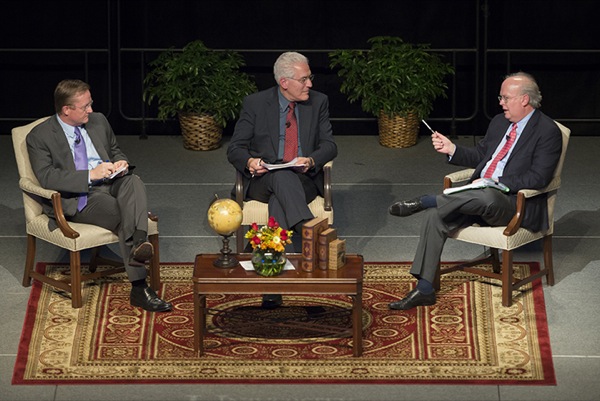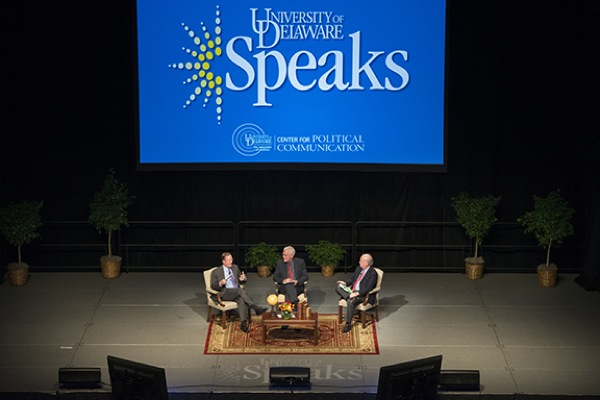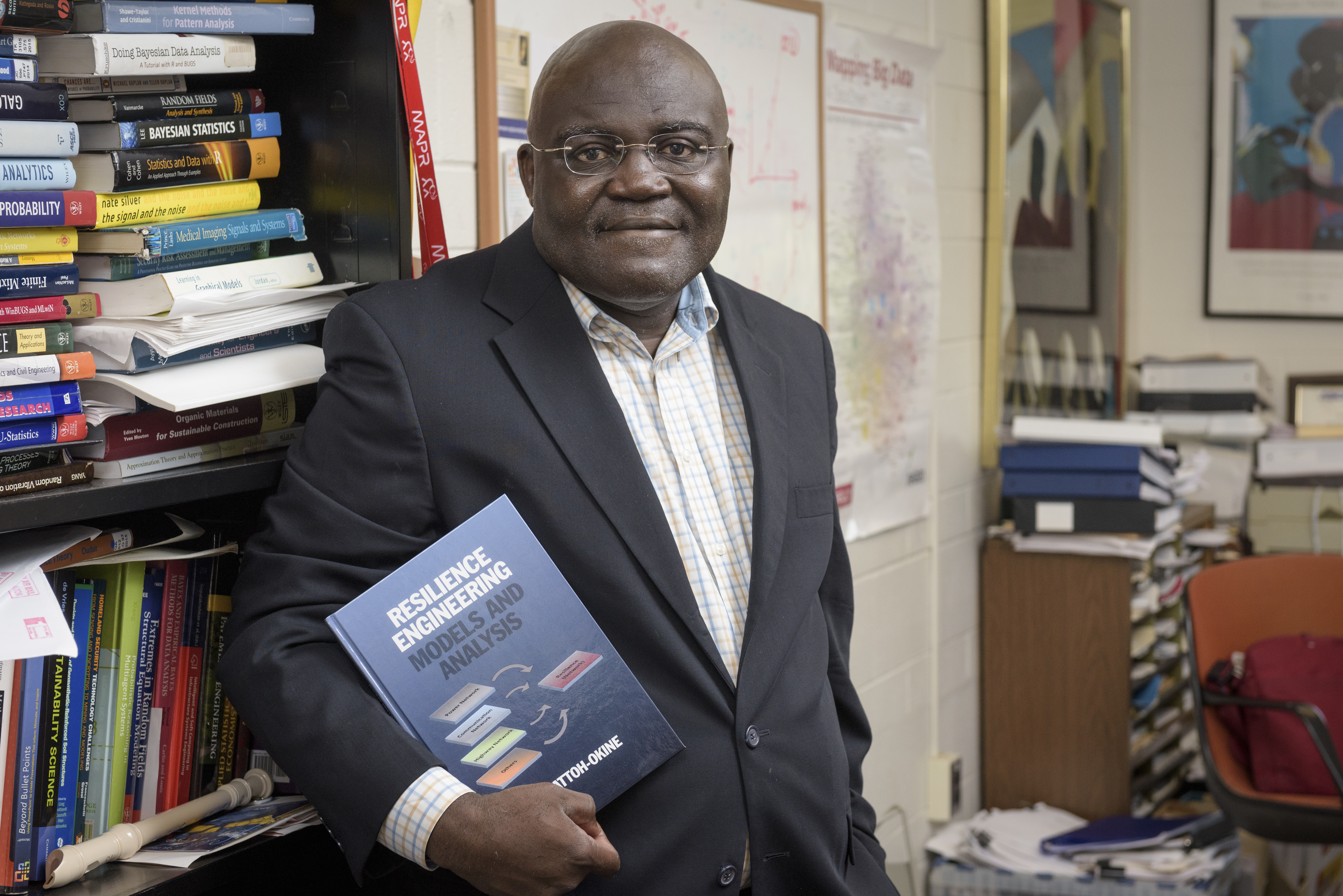


UD Speaks: Gibbs, Rove
Pundits Gibbs, Rove share views on what it takes to win White House
3:55 p.m., Nov. 2, 2012--In What It Takes: The Way to the White House, author Richard Ben Cramer looked at the key players and their campaign strategies during the 1988 presidential race.
With less than a week left in this year’s presidential sweepstakes, two prominent political pundits stopped by the University of Delaware’s Bob Carpenter Center on Thursday evening, Nov. 1, to share their views on what it will take to win when Americans cast their votes Tuesday.
People Stories
'Resilience Engineering'
Reviresco June run
In a markedly civil exchange of ideas on campaign strategies and spending, Democrat Robert Gibbs and Republican Karl Rove delighted the audience of more than 700 during the UD Speaks joint public lecture moderated by Ralph Begleiter, director of UD’s Center for Political Communication.
Both Gibbs, former press secretary for the administration of President Barack Obama and senior adviser for the Obama election campaign, and Rove, regarded as the architect of George W. Bush’s two victorious presidential campaigns, both agreed that more money will be spent this year than in any previous race for the White House, especially in states where the outcome is still unclear.
“One of the differences this year is that it will all come down to nine key swing states,” Gibbs said. “In 2000, there were 16 key states still competitive at this late date.”
The key states mentioned by Gibbs include Colorado, Florida, Iowa, Nevada, New Hampshire, North Carolina, Ohio, Virginia and Wisconsin.
“The president is strongly positioned in each of these nine swing states,” Gibbs said. “I anticipate that we will win the majority of those states.”
As to be expected, Rove had a different view of what will happen on Nov. 6.
“Robert is right about the nine states, but I would also add that I think Pennsylvania, Minnesota and Michigan also will play key roles,” Rove said. “Until recently, they have not had the barrage of television ads that some other states have had. We’ve decided we want to do what President Obama did in 2008 and extend the battle ground to those states.”
With both sides opting to spend their still plentiful reserves in targeted swing states, Begleiter asked if this approach excludes the rest of the country from participating in the election.
“I think there will be some debate that about whether or not we did things the right way,” Rove said. “We see this as an opportunity. You don’t raise all this money and spend it in a place where you are not going to win.”
Gibbs noted that in 2008, states traditionally seen as Republican strongholds experienced significant changes in voting preferences.
“The demographics have changed in a lot of these states,” Gibbs said. “Virginia, for example, went from a red state to a purple state very quickly. Virginia hadn’t voted for a Democrat since Lyndon Johnson.”
When asked what advice he would offer for the final days of the campaign, Rove noted that each campaign needed to occupy every moment in each critical state.
“You have to maximize your time and you have to have a good closing message,” Rove said. “With the small group of undecided voters you need to give them the strongest message you can give.”
“There will be a bunch of candidates in the same states over the next five days, and you have to have a clear, compelling message,” Gibbs said. “In Ohio, President Obama told voters that we have been through tough times, but things are looking up.”
Questions from students
Begleiter also presented questions from students, including the importance of social media in communicating and analyzing voter opinions.
“Today, ads are a whole lot less expensive to make, and we want to use them to drive our message,” Gibbs said. “It will be amazing to see what technological leaps we will make between now and 2016. With the new media, you get to know what people are thinking and it changes the speed at which things happen.”
“We don’t know what works in social media and what doesn’t,” Rove said. “I have a sneaking suspicion that many of these things are insular in nature, with people communicating on social media with others who share the same views.”
Both Gibbs and Rove responded to student queries about what got them interested in politics and careers that saw each of them working in the White House of Presidents Obama and Bush, respectively.
“One of the first books I’ve ever read was Great Moments In History,” Rove said. I’ve always loved history and I’ve always loved politics.”
“Like Karl, I also love to read about history. I took some political science courses and got inspired by the speeches of President John F. Kennedy and his brother Sen. Robert Kennedy,” Gibbs said. “I got an internship in 1990. An internship is what you make of it. You have all the tools you need to get involved. All you need is to do it.”
Both men received a standing ovation at the close of the event, which was presented by the Division of Student Life, University Student Centers and the Center for Political Communication.
Article by Jerry Rhodes
Photos by Evan Krape









